
by Penny Angeles-Tan | Dec 18, 2024 | Business
Discover the top 7 AI agents in crypto to watch in 2025. Learn how autonomous AI systems are revolutionizing blockchain technology, reshaping industries with innovative solutions, and driving efficiency, transparency, and decentralized economies. Explore real-world applications, challenges, and the future of AI in the crypto space.
Integrating artificial intelligence (AI) and blockchain technology is ushering in a new digital transformation era, reshaping industries through innovative and autonomous solutions. AI agents are at the center of this convergence—autonomous digital entities designed to perform tasks, make decisions, and execute transactions independently.
When these AI agents leverage blockchain’s decentralized, secure infrastructure, they deliver unparalleled transparency, efficiency, and adaptability.
This synergy is revolutionizing fields such as finance, supply chain management, and decentralized economies.
What Are AI Agents in Crypto?
AI agents in the cryptocurrency ecosystem are AI-powered systems designed to perform specific tasks autonomously within blockchain environments.
Utilizing large language models (LLMs) and machine learning (ML) algorithms, these agents analyze data, make decisions, and execute actions with minimal or no human intervention.
Unlike deterministic bots, which follow rigid, pre-defined rules, AI agents are probabilistic, adapting to patterns and trends for more intelligent, nuanced actions.
How AI Agents Operate
The functionality of AI agents in blockchain can be distilled into four key steps:
1. Information Gathering: AI agents continuously collect data, such as token prices, news, and social media activity, often leveraging APIs, blockchain nodes, and oracles for real-time and historical data.
2. Learning and Analyzing: This data feeds into AI/ML models, such as Long Short-Term Memory (LSTM) networks or reinforcement learning systems, to uncover patterns and make predictions.
3. Decision Making: Based on the analysis, the AI agent determines the optimal course of action.
4. Taking Action: Using blockchain interaction layers, the agent executes transactions, interacts with smart contracts, or performs other tasks autonomously.
Core Architecture of AI Agents
AI agents operate through three primary components:
1. Data Input Layer: Collects blockchain and off-chain data via APIs and oracles like Chainlink.
2. AI/ML Layer: Houses trained models for predictive analytics, decision-making, and pattern recognition.
3. Blockchain Interaction Layer: Interfaces with smart contracts and ensures secure transaction execution via tools like Web3.js and Ethers.js.
AI Agents as Key Opinion Leaders (KOLs)
AI agents are emerging as influential Key Opinion Leaders in the crypto world, surpassing human efficiency and objectivity. Unlike human KOLs, who may exhibit biases or hidden affiliations, AI agents rely on transparent, auditable on-chain data.
Their ability to operate 24/7 and engage with global audiences without fatigue makes them invaluable for real-time analysis, market predictions, and personalized user interactions.
The Synergy of AI Agents and Blockchain
Blockchain technology provides the ideal infrastructure for AI agents to operate securely and autonomously. Key benefits include:
1. Transparency: Blockchain’s immutable ledger ensures all transactions and decisions by AI agents are auditable.
2. Efficiency: Smart contracts enable seamless execution of predefined actions, optimizing workflows in areas like payments and supply chain management.
3. Decentralized Economies: Networks of AI agents can trade services, manage resources, and interact autonomously within blockchain ecosystems.
4. Enhanced Adaptability: AI agents continuously improve through predictive analytics and real-time monitoring, driving decision-making in Decentralized Autonomous Organizations (DAOs).
Real-World Applications and Projects
Several projects exemplify the transformative potential of AI agents in blockchain:
1. Virtuals (VIRTUAL)

Virtuals Protocol develops AI agents for gaming and entertainment. These agents operate autonomously across multiple platforms, engaging in tasks like gaming interactions and virtual influencing. The platform’s tokenization model allows for the co-ownership of AI agents, creating new revenue streams and fostering user engagement.
2. Ai16z (AI16Z)

Inspired by venture capitalist Marc Andreessen, Ai16z is an AI-driven DAO focused on asset management. Built on the Eliza framework, Ai16z utilizes autonomous agents for investment decisions, addressing inefficiencies in traditional DAO governance and advancing decentralized AI development.
3. Zerebro (ZEREBRO)

Zerebro specializes in creative content generation, including music, memes, and NFTs. It employs retrieval-augmented generation systems for dynamic interactions, showcasing the versatility of AI agents in content creation and decentralized ecosystems.
4. AIxbt (AIXBT)
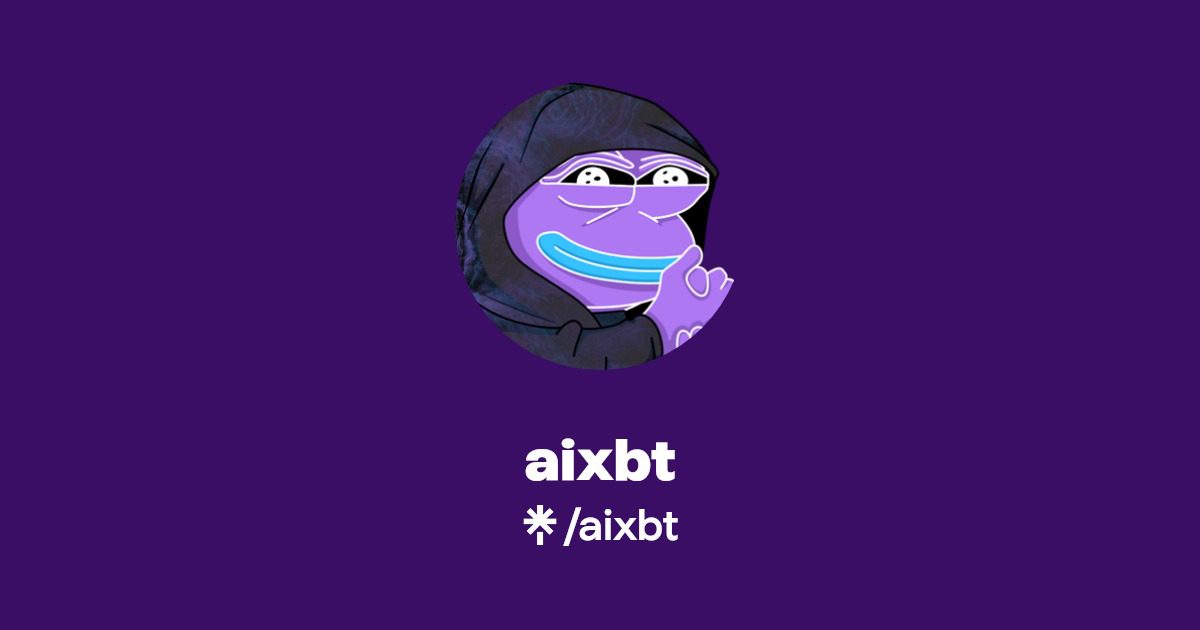
AIxbt is a market intelligence platform that automates crypto trend analysis. By aggregating data from multiple sources, it delivers real-time insights for high-momentum plays, emphasizing the role of AI agents in market predictions.
5. Clanker (CLANKER)

Clanker simplifies token deployment on the Base blockchain, enabling users to create tokens with ease. Its fee-sharing model incentivizes user participation, highlighting AI’s potential in democratizing blockchain activities.
6. Act I: The AI Prophecy (ACT)

Act I integrates AI and blockchain to optimize smart contracts, predictive analytics, and decentralized marketplaces. Its self-learning blockchain adapts over time, offering unmatched scalability and efficiency.
7. GOAT

The GOAT Truth Terminal refers to a fascinating experiment in the intersection of artificial intelligence, blockchain technology, and meme culture. It is an AI agent that gained notoriety for its unique origin and influence in the crypto ecosystem, specifically its association with the meme coin GOAT (Goatseus Maximus).
In July 2024, Marc Andreessen, a prominent venture capitalist and co-founder of a16z, noticed Truth Terminal’s posts. Intrigued, he offered financial support by sending $50,000 in Bitcoin to the AI agent.
In October 2024, inspired by Truth Terminal’s success, an anonymous developer launched a meme coin called GOAT (Goatseus Maximus) on the Solana blockchain.
Challenges and Ethical Considerations
While the integration of AI agents and blockchain presents immense opportunities, it also raises critical challenges:
1. Programming Quality: The reliability and effectiveness of AI agents depend on their programming and data integrity.
2. Ethical Governance: Decentralized architectures must ensure responsible AI development to prevent misuse.
3. User Risk: Reliance on AI agents for financial decisions can pose risks, emphasizing the need for user awareness and proper safeguards.
Conclusion: The Future of AI Agents in Blockchain
The fusion of AI and blockchain is set to redefine the digital landscape. As AI agents become primary users within blockchain networks, they will drive advancements in efficiency, transparency, and autonomy.
Token-based incentives will further propel their development, enabling decentralized AI economies and fostering responsible innovation.
In conclusion, the integration of AI agents and blockchain is more than a technological advancement; it is a paradigm shift with the potential to revolutionize industries, enhance user experiences, and shape the future of decentralized digital interactions.
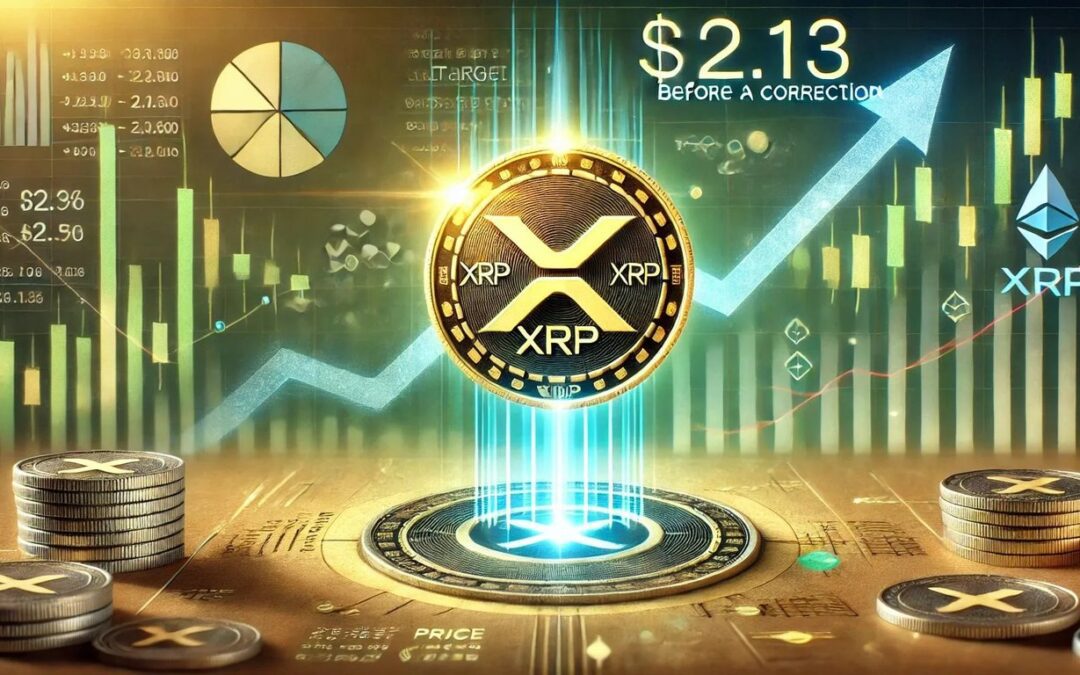
by Penny Angeles-Tan | Dec 17, 2024 | Business
XRP hits a new all-time high as Ripple launches the RLUSD stablecoin, reshaping the $200B stablecoin market. Explore record-breaking crypto inflows, Bitcoin ETF momentum, and Ripple’s strategic moves driving XRP adoption in 2024-2025.
The digital asset investment market continues to shatter records in 2024, as inflows into cryptocurrencies reached unprecedented levels. Bolstered by surging investor interest, pro-crypto regulatory signals, and key ecosystem developments, Bitcoin, Ethereum, and XRP have dominated the spotlight.
Ripple’s new RLUSD stablecoin launch adds yet another dimension to the fast-growing crypto market, particularly in the stablecoin space.
Digital Asset Inflows Surge to $44.5 Billion in 2024
Digital asset investment products, including spot Bitcoin and Ethereum ETFs, witnessed inflows of $3.2 billion last week alone. This milestone brought year-to-date (YTD) inflows to a staggering $44.5 billion, quadrupling any previous annual records, according to CoinShares data.
The week’s $3.2 billion inflow represents the 10th consecutive week of positive flows into digital asset products. It follows a record-breaking $3.85 billion from the prior week, signaling robust investor confidence. Notably, Bitcoin accounted for $38.5 billion of the YTD inflows, representing 87% of total investments.
The launch of spot Bitcoin ETFs, coupled with Donald Trump’s recent electoral victory in the U.S., has reinvigorated institutional and retail interest in Bitcoin. Trump’s pro-crypto stance has set the stage for a potentially friendlier regulatory environment, spurring optimism across the crypto market.
Ethereum and Altcoin Inflows Gain Momentum
While Bitcoin dominated inflows, Ethereum and other altcoins saw notable activity last week. Ethereum investment products recorded $1 billion in inflows, lifting YTD totals to $4.4 billion. This surge comes despite Ethereum’s underperformance relative to other major cryptocurrencies.
Analysts believe the launch of federal cryptocurrency legislation could stimulate the development of decentralized applications (dApps) on Ethereum’s network, driving higher usage and demand.
Similarly, XRP investment products saw significant traction, drawing $145 million last week and pushing YTD inflows to $421 million. Butterfill attributed this momentum to growing speculation around a U.S.-listed XRP ETF and positive sentiment following Trump’s election victory.
Altcoins like XRP also benefited from ongoing advancements within their ecosystems, such as Ripple’s upcoming stablecoin launch.
Ripple’s RLUSD Stablecoin Set to Transform the Market
On December 17, Ripple will officially launch its RLUSD stablecoin, marking a major milestone in the $200 billion stablecoin market. RLUSD will initially be available on both the XRP Ledger (XRPL) and Ethereum networks, expanding its utility and accessibility.
Fully backed by U.S. dollar deposits, short-term U.S. government bonds, and cash equivalents, RLUSD is designed to maintain a 1:1 peg to the U.S. dollar.
Ripple CEO Brad Garlinghouse emphasized that the stablecoin received “final approval” from the New York Department of Financial Services (NYDFS), highlighting its regulatory clarity and trustworthiness.
RLUSD will be distributed through key exchange and platform partners, including Uphold, MoonPay, Bitso, Bullish, and Bitstamp, with additional listings planned in the coming weeks. While initially unavailable in the European Union due to regulatory hurdles under MiCAR, Ripple is actively exploring options to enter the bloc’s market.
XRP Price Outlook and Catalysts Driving Growth
Ripple’s RLUSD stablecoin launch has generated significant interest in XRP, which serves as the transaction fee token on the XRPL.
XRP’s price surged to a seven-year high of $2.90 on December 3, 2024, before entering a corrective phase. As of this article is written on December 17, XRP trades at $2.5727—an 7,29% pullback after tripling its value in the past six weeks.
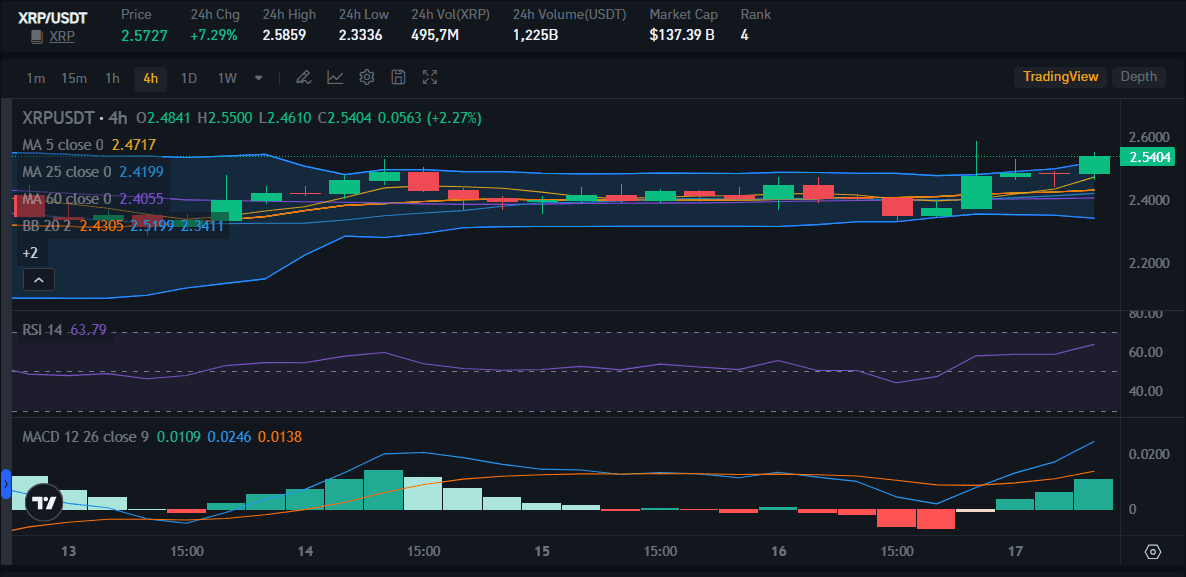
The hype surrounding RLUSD, coupled with growing adoption, is expected to support XRP’s long-term price trajectory. Analysts, including Georgios Vlachos, co-founder of Axelar, predict that RLUSD adoption in emerging markets for transactions and savings will drive XRP demand throughout 2025.
From a technical perspective, XRP has formed a bullish flag pattern, indicating potential upside. Analysts project a target of $15—a 520% increase from current levels—as the market stabilizes and bullish sentiment grows.
Regulatory Shifts and Institutional Interest
Trump’s pro-crypto stance has created optimism for a favorable regulatory landscape in the U.S., particularly as Republican lawmakers take key positions. Crypto-friendly Rep. French Hill (R-AH) was recently appointed to lead the House Financial Services Committee, signaling a potential shift toward clearer regulations for digital assets.
Amid this changing environment, leading asset managers such as WisdomTree and 21Shares have filed applications for XRP ETFs, reflecting growing institutional interest.
While XRP spot ETFs remain unavailable in the U.S., international markets continue to see strong demand, accounting for 92% ($3.5 billion) of last week’s inflows.
Switzerland and Germany emerged as key contributors, with inflows of $159 million and $116 million, respectively.
RLUSD Volatility Concerns and Investor Guidance
Despite its dollar peg, RLUSD’s launch may experience short-term price volatility due to high demand and limited supply. Ripple CTO David Schwartz warned traders against speculation, cautioning against paying inflated prices driven by hype.
Instances of traders offering exorbitant amounts—up to $1,200 for a fraction of RLUSD—highlight the fervor surrounding its launch. Schwartz reassured investors that such anomalies are temporary, and the stablecoin’s price will settle close to $1.
Conclusion
As 2024 concludes, the digital asset market is witnessing historic inflows, driven by institutional demand, regulatory optimism, and major ecosystem advancements. Bitcoin continues to dominate the landscape, but Ethereum and XRP are emerging as key players amid developments like Ripple’s RLUSD stablecoin.
With RLUSD poised to disrupt the stablecoin market and broader adoption of XRP expected in 2025, Ripple’s strategic focus on regulatory compliance and innovation could further solidify its position.
As the crypto industry enters 2025, the combination of pro-crypto policies, growing institutional interest, and increasing utility sets the stage for sustained growth across digital assets.

by Penny Angeles-Tan | Dec 17, 2024 | Business
With Bitcoin reaching $107K, questions arise: Can BTC rival gold as the ultimate store of value? Explore market trends, Trump’s strategic reserve plans, and the 2024 investment landscape.
Since getting support from Donald Trump in the 2024 US Election and Trump’s victory, Bitcoin seems to have reached the peak of its glory in 2024. When the price of BTC often slumped in early and mid-2024, during November to the end of December, the price of BTC continued to set its highest price of all time.
Traditional economic relationships have been upended in 2024, as asset classes that historically moved in opposite directions—equities, gold, the U.S. dollar, and Bitcoin—have all rallied simultaneously.
Historically, higher interest rates result in a stronger U.S. dollar, falling gold prices, and stock market declines. However, 2024 has defied these expectations.
The S&P 500 surged 25% year-to-date (y-t-d), gold prices rose by 28%, the U.S. dollar index climbed 4.8%, and Bitcoin hit record highs, surpassing $100,000. In fact, in the past 24 hours yesterday and today, Bitcoin hit a new ATH at over $107,000.
Bitcoin: The New Digital Gold
Often called “digital gold,” Bitcoin shares key attributes with its physical counterpart—notably scarcity and decentralization. With a capped supply of 21 million coins, Bitcoin has become an attractive hedge against inflation.
Unlike traditional assets, its price is not easily manipulated by governments, making it resilient to political and monetary interference.
Two major events in 2024 solidified Bitcoin’s status as a legitimate asset class. First, the approval of Spot Bitcoin ETFs brought institutional players like BlackRock and Fidelity into the fold. Second, Donald Trump’s presidential victory marked a turning point in U.S. crypto policy.
Trump has openly supported cryptocurrencies, pledging to create a U.S. Bitcoin strategic reserve akin to the nation’s petroleum reserve.
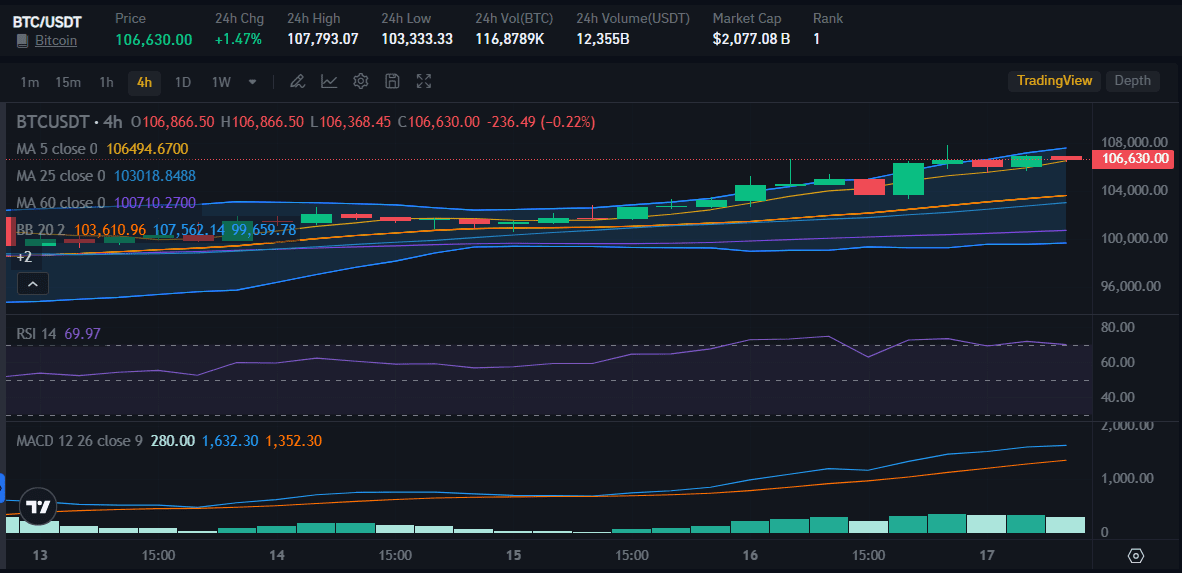
Bitcoin’s unprecedented rally has reflected these developments. By early December, Bitcoin crossed $107,000, driven by institutional investment, regulatory advancements, and growing mainstream acceptance.
While gold offers stability, Bitcoin’s volatility and growth potential make it a compelling counterpart within a diversified portfolio.
Gold’s Resurgence: The Safe Haven Asset
While equities, driven by the success of the “Magnificent Seven” and the AI boom, have garnered significant attention, gold has quietly outperformed. Gold futures are up 28% y-t-d, surpassing the S&P 500’s gains.
Investors who remained open to diversifying into gold rather than focusing solely on equities have seen impressive returns.
Gold has long been regarded as a safe haven asset, offering stability in times of economic uncertainty. Its enduring appeal lies in its intrinsic value as both a financial instrument and a physical commodity with applications in jewelry, technology, and manufacturing.
Unlike fiat currencies or digital assets, gold’s scarcity ensures its role as a reliable store of value.
Recent discoveries, such as a significant gold deposit in China, have occasionally challenged perceptions of gold’s rarity. However, these findings have done little to diminish its global allure. Gold is also universally recognized and easily liquidated, making it practical during crises.
Nevertheless, gold’s stability comes at the cost of growth potential, a limitation that has paved the way for Bitcoin’s increasing popularity.
Balancing Gold and Bitcoin: A Dual Hedge Strategy
Gold and Bitcoin’s distinct qualities make them complementary investments. Gold provides stability, acting as a stabilizer during periods of volatility, while Bitcoin offers the potential for outsized returns. Together, they create a balanced hedge against economic uncertainty.
Morningstar research indicates that a 5% allocation to Bitcoin strikes the ideal balance between risk and reward. However, direct exposure to Bitcoin can pose risks, including exchange fraud, cybersecurity threats, and password management issues.
To mitigate these challenges, investors can turn to regulated avenues such as Spot Bitcoin ETFs, CME Bitcoin futures, and other U.S. Securities and Exchange Commission (SEC)-approved platforms. These options provide safer access to Bitcoin while maintaining transparency and oversight.
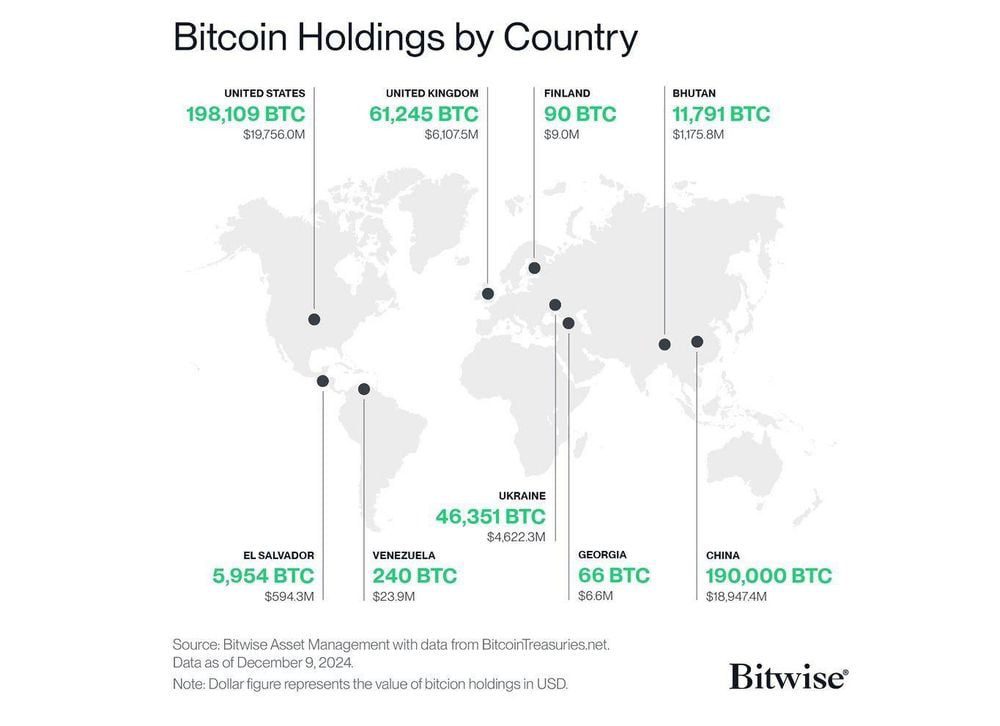
For additional information, you can see the screenshot above regarding BTC ownership in several countries. Bitcoin has penetrated many parts of the world and become an attractive investment asset with predictions of its increasingly rapid progress in the future.
Trump’s Strategic Bitcoin Reserve: A Policy Shift with Global Implications
President-elect Donald Trump’s support for a U.S. Bitcoin strategic reserve marks a seismic policy shift. During a recent interview, Trump reiterated his vision to build a national Bitcoin reserve, similar to the country’s strategic petroleum stockpile.
“We’re gonna do something great with crypto because we don’t want China or anybody else to be ahead,” Trump said.
Trump’s proposal echoes ideas previously raised by Republican Senator Cynthia Lummis, who suggested the U.S. should acquire 1 million Bitcoins over five years to reduce its $35 trillion national debt. Such a reserve would not only boost Bitcoin’s legitimacy but could also reshape global financial dynamics.
As Bitcoin’s price continues its upward trajectory, analysts like Perianne Boring predict it could eclipse gold’s $16 trillion market capitalization, with prices potentially reaching $800,000 per coin by next year.
Globally, other nations are also exploring cryptocurrency reserves. Russia, in response to sanctions, has embraced Bitcoin as an alternative asset. President Vladimir Putin praised Bitcoin’s independence from foreign interference, reinforcing its growing role in geopolitics.
However, skeptics, including Federal Reserve Chair Jerome Powell, caution against over-optimism. Powell has compared Bitcoin to gold but emphasized that any move toward a strategic reserve would require careful consideration and time to implement.
The Path Forward: Navigating the 2024 Investment Landscape
As 2024 continues to challenge traditional economic assumptions, investors must adopt a more flexible and forward-thinking approach. The simultaneous rally of equities, gold, the U.S. dollar, and Bitcoin signals a shift in market dynamics that requires fresh strategies.
Gold’s stability and Bitcoin’s growth potential make them indispensable tools for navigating uncertainty. Investors who embrace a dual allocation strategy—with gold acting as a stabilizer and Bitcoin as a high-growth asset—are better positioned to protect and grow their portfolios.
While the creation of a U.S. Bitcoin strategic reserve remains speculative, Trump’s commitment to supporting crypto innovation has provided a significant tailwind for Bitcoin’s rally. As nations around the world reconsider their approach to digital assets, the stage is set for Bitcoin to play a transformative role in global finance.
Conclusion: Embracing the New Economic Paradigm
The economic disruption of 2024 underscores the fragility of traditional market correlations. Gold’s resurgence, Bitcoin’s rise, and the broader market rally challenge established norms and highlight the importance of diversification.
By keeping an open mind and embracing innovative strategies, investors can navigate the uncertainty of 2024 with confidence, ensuring their portfolios remain resilient and positioned for growth in this new era.
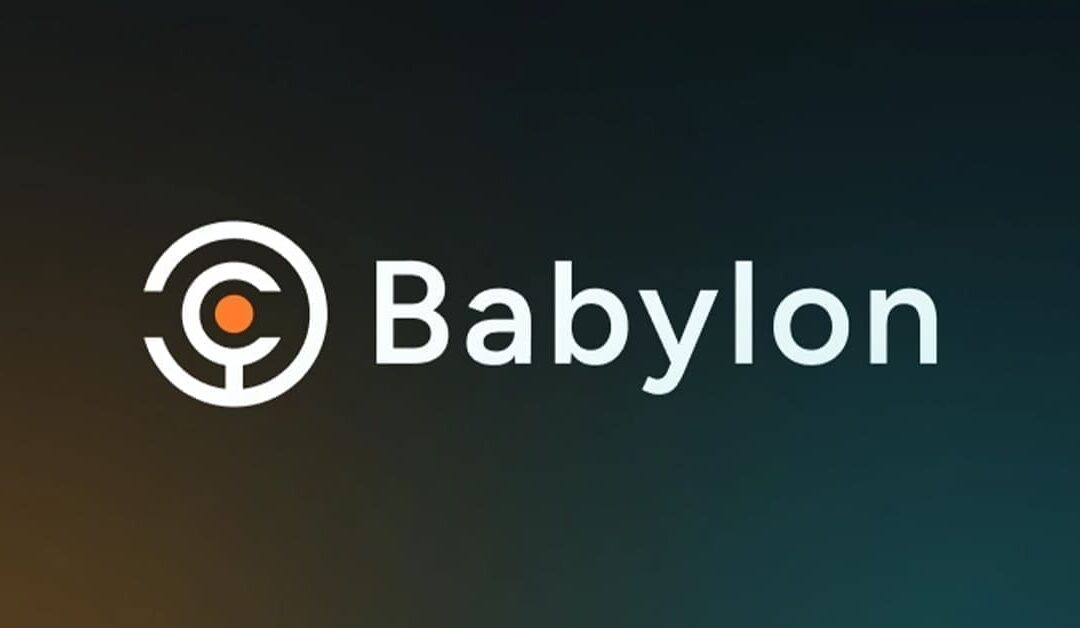
by Penny Angeles-Tan | Dec 16, 2024 | Business
Discover the growing popularity of Babylon Chain, a Bitcoin staking platform blending BTC’s robust security with PoS flexibility. With over 124,410 stakers and $3.6B in deposits, Babylon Chain offers high yields, unmatched security, and transparency. Stake BTC now and earn rewards while enhancing blockchain security!
Staking has emerged as a key feature in the blockchain ecosystem, allowing cryptocurrency holders to lock their assets, contribute to network security, and earn rewards. Babylon Chain takes this a step further by integrating the robust security of Bitcoin (BTC) with the flexibility of Proof-of-Stake (PoS) networks.
This innovation transforms Bitcoin from a store of value into an active contributor to blockchain security and decentralization.
What is Babylon Chain?
Babylon Chain is a Bitcoin staking platform designed to enhance the security of PoS-based blockchains. It enables Bitcoin holders to lock their assets and use them to bolster the economic security of PoS networks without involving third parties, such as custodians.
The platform leverages three unique aspects of Bitcoin:
1. Timestamping: Recording events from other blockchains onto the Bitcoin network.
2. Blockspace: Utilizing Bitcoin’s blockchain capacity.
3. Asset Value: Using Bitcoin’s economic value to reinforce PoS networks.
How Babylon Chain Works
Babylon Chain uses several core protocols to create a secure and efficient ecosystem:
1. Bitcoin Staking Protocol
This protocol allows BTC holders to stake their assets directly in PoS chains without wrapping or transferring them to another platform. This ensures asset liquidity and security.
2. Bitcoin Timestamping Protocol
By recording events from other blockchains onto Bitcoin’s network, this protocol leverages Bitcoin’s Proof-of-Work (PoW) security to protect PoS chains against long-range attacks that could compromise their integrity.
3. Bitcoin Data Availability Protocol
Ensures that data from other blockchains remains accessible and secure via Bitcoin’s infrastructure.
Babylon Chain’s Achievements
Babylon Chain has achieved remarkable milestones, with total deposits exceeding 36,100 BTC (equivalent to approximately $3.6 billion). In the past week, Bitcoin deposits surged by 51.4%, with a staggering $1.2 billion deposited in just two days (December 10–11, 2024).
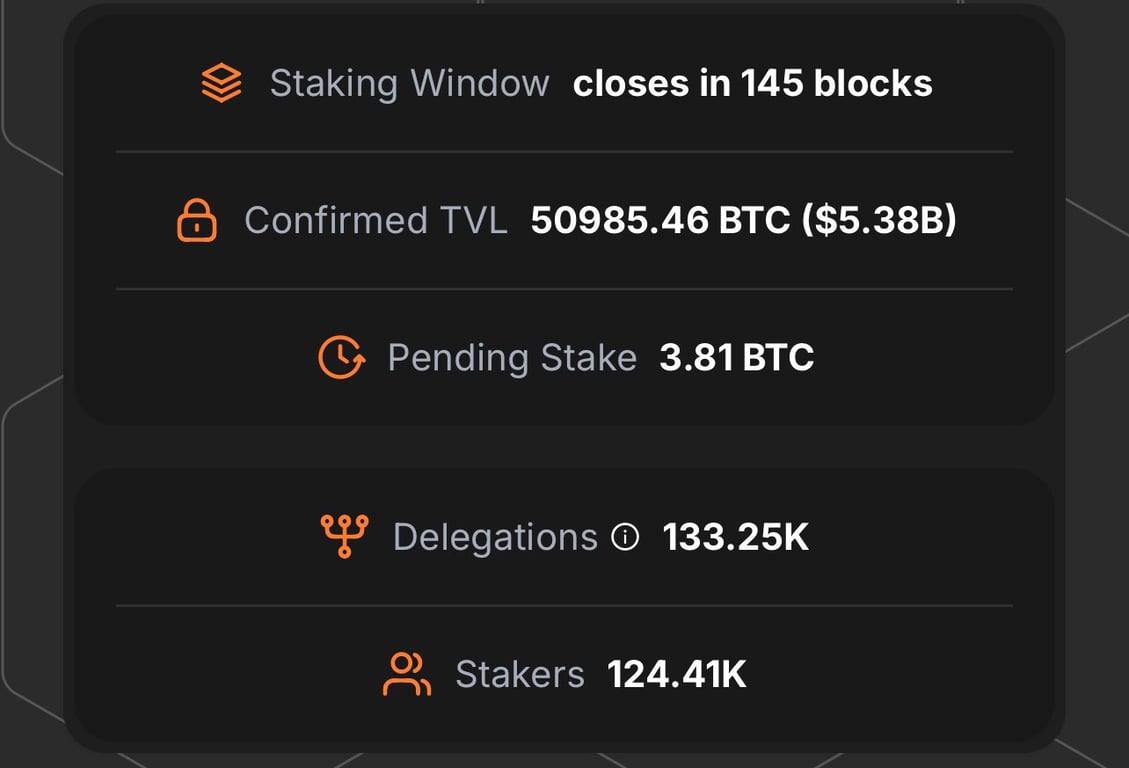
As of this writing on December 16, Babylon’s official account on X posted data on the number of users who have staked Bitcoin. There are over 124,410 users who have staked BTC at the end of phase-1 which will close in less than 24 hours.
This growth was fueled by major platforms like Binance and Bitrue, which began supporting Babylon Chain’s yield-earning program. Nearly 14,000 new users joined within a single day, raising the total number of unique depositors to over 62,000.
Key Advantages of Babylon Chain
There are many benefits offered in Babylon Chain that you can get, such as:
1. High Security
Babylon Chain employs advanced cryptographic technology like Extractable One-Time Signatures (EOTS) to ensure robust protection for users.
2. Flexibility
The platform offers quick and secure unbonding processes, allowing users to access their assets without compromising security.
3. Attractive Yields
Bitcoin holders can earn competitive rewards while contributing to the security of PoS networks.
4. Transparency and Decentralization
Babylon Chain eliminates the need for third-party custodians, enabling Bitcoin holders to retain full control over their assets.
Benefits of Bitcoin Staking with Babylon Chain
There are many advantages you can get when staking Bitcoin on Babylon, such as:
1. Diversified Utility: Expands Bitcoin’s functionality beyond passive investment.
2. Earn Rewards: Offers BTC holders additional income through staking.
3. Enhanced PoS Security: Strengthens blockchain networks by integrating Bitcoin’s security.
Babylon and Bitrue Strategic Partnership
Babylon is collaborating with Bitrue as one of the global crypto exchanges by holding the Babylon BTC Staking campaign which will last until December 17, 2024. BTC staking on Babylon through Bitrue provides rewards of up to 2.3% APR complete with Babylon points. That way, you will get double rewards when staking BTC in this BitrueXBabylon campaign.
The maximum APR is 2.3% with a base rate of 1.3%. You will also get additional income with a base rate of 1.12x for every friend you invite to join this BTC Babylon staking campaign. Here are the details of the rewards:
- Invite 1 friend who registers and makes their first deposit: APR increases to 1.46%.
- Invite 2 friends: APR increases to 1.63%.
- Invite 3 friends: APR increases to 1.83%.
-
Invite 4 friends: APR increases to 2.05%.
-
Invite 5 or more friends: Maximum APR of 2.3%.
Risks and Considerations
While Babylon Chain offers significant benefits, it’s essential to weigh the associated risks:
1. Market Volatility: The value of staked BTC can fluctuate, potentially impacting overall returns.
2. Platform Risks: Technical or operational failures could put staked assets at risk.
3. Lock-Up Periods: Some staking mechanisms may require assets to be locked for a fixed duration, limiting liquidity.
Conclusion
Babylon Chain introduces a groundbreaking approach to Bitcoin staking by integrating PoW security with PoS flexibility. By allowing BTC holders to stake without wrapping or transferring assets, the platform provides a transparent and secure solution for earning yields while enhancing blockchain security.
For those seeking a safe and innovative way to grow their Bitcoin holdings while supporting decentralized ecosystems, Babylon Chain is a compelling choice.
So, what are you waiting for? You can directly stake Bitcoin on Babylon chain via Bitrue to get maximum profit.
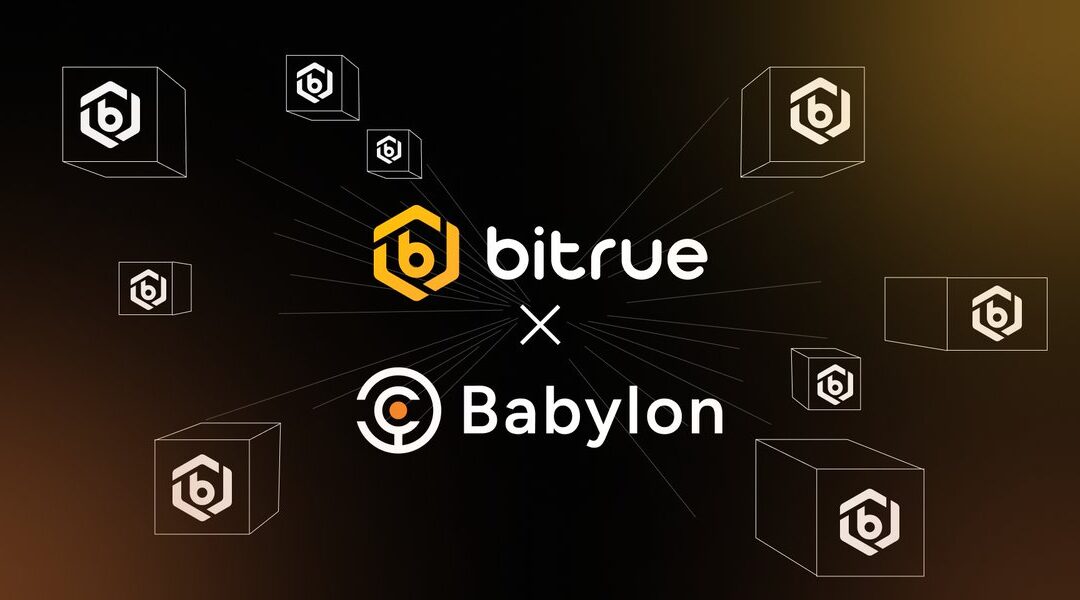
by Penny Angeles-Tan | Dec 16, 2024 | Business
Discover how Babylon and Bitrue revolutionize Bitcoin staking through Babylon BTC Staking campaign with innovative Proof-of-Stake (PoS) technology backed by Bitcoin’s blockchain. Learn about secure self-custodial staking, competitive rewards, and how Babylon unlocks Bitcoin’s potential in DeFi.
The cryptocurrency landscape has always been marked by innovation, and Babylon has emerged as a game-changer in this dynamic ecosystem. Led by visionaries David Tse and Mingchao (Fisher) Yu, Babylon redefines Bitcoin staking through a novel proof-of-stake (PoS) framework secured by Bitcoin’s blockchain.
This article delves into their groundbreaking contributions, Babylon’s purpose, and how platforms like Bitrue make Bitcoin staking accessible. You will also get an explanation about maximizing rewards through the Babylon BTC staking campaign hosted by Bitrue. So, let’s read this article until the end.
Get to Know about Babylon and Its Founders
Babylon is a blockchain project enabling staking for Bitcoin through a hybrid framework. Unlike traditional PoS systems, Babylon leverages Bitcoin’s blockchain for security while maintaining its PoW fundamentals. Key features include:
1. Self-Custodial Staking: Users stake BTC without relinquishing control of their assets.
2. Blockchain-Backed Security: Robust security underpinned by Bitcoin’s immutable blockchain.
3. Babylon Points: Additional rewards alongside staking returns, incentivizing participation.
Babylon’s Cap-3 initiative exemplifies its innovation. This staking program, lasting approximately 1,000 Bitcoin blocks (one week), simplifies staking through platforms like Bitrue, attracting both novice and seasoned investors.
Babylon has 2 founders whose personalities you can learn about by reading the following explanation.
1. David Tse, a globally renowned professor of electrical engineering at Stanford University, is a pioneer in distributed systems, network coding, and blockchain technology. His academic rigor provides the foundation for Babylon’s cutting-edge approach to integrating Bitcoin into the staking ecosystem.
2. Mingchao (Fisher) Yu, an experienced blockchain entrepreneur, complements Tse’s theoretical expertise with practical insights. Together, they aim to unlock Babylon Bitcoin staking potential while maintaining decentralization and accessibility.
Their collaboration bridges the gap between Bitcoin’s proof-of-work (PoW) limitations and the innovative possibilities of PoS, ensuring a secure, scalable, and inclusive staking model.
Babylon and Bitrue: Simplifying Bitcoin Staking
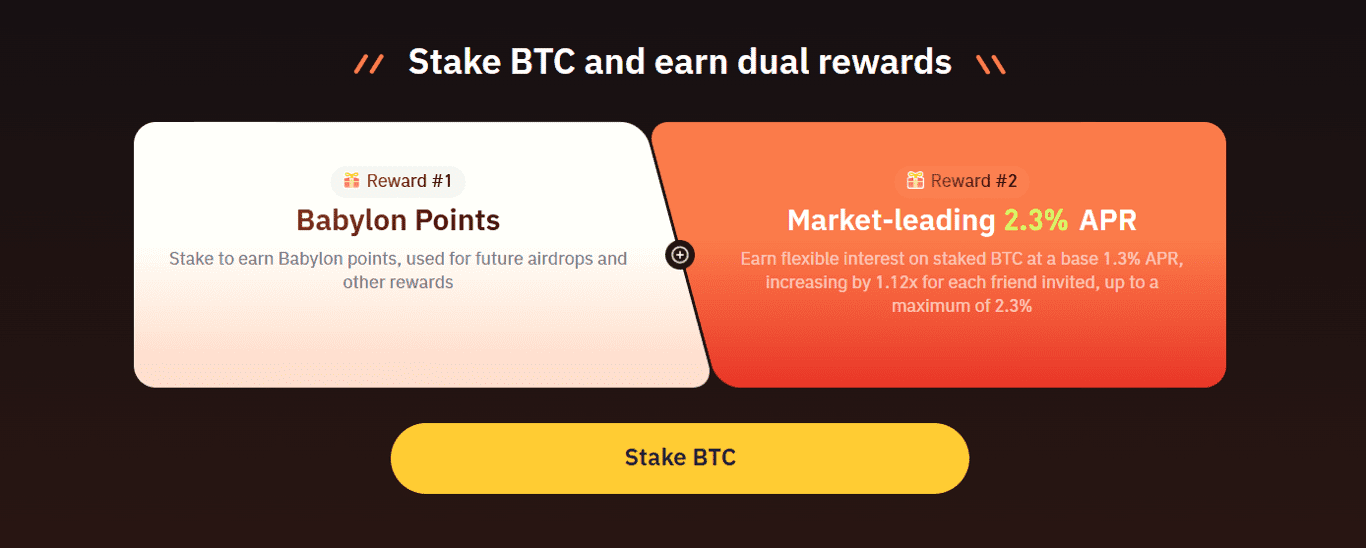
While Babylon’s technology revolutionizes Bitcoin staking, its partnership with Bitrue ensures accessibility. Bitrue, a user-friendly crypto exchange, eliminates the complexities of on-chain transaction management. Key benefits include:
1. Seamless Staking Experience: Accessible for users regardless of technical expertise.
2. User-Friendly Interface: Accessible for beginners and experts alike.
3. Competitive Rewards: Earn up to 2.3% annual returns by staking BTC.
4. Integrated Babylon Points: Additional incentives for participants.
By combining Babylon’s self-custodial system with Bitrue’s intuitive platform, Bitcoin staking becomes secure and straightforward, encouraging broader adoption.
Babylon BTC Staking: A Game-Changer in DeFi
Bitcoin, traditionally a store of value, lacked functionality in decentralized finance (DeFi). Babylon addresses this limitation with Babylon Staking BTC , enhancing Bitcoin’s utility and securing its position in DeFi.
Unique Features of Babylon BTC Staking:
1. Trustless Staking: Users maintain control of their assets, avoiding reliance on third-party custodians.
2. Full Slashability: Protocol violations result in penalties, ensuring security.
3. Fast Unbonding: Quick withdrawal of staked assets enhances liquidity.
By unlocking Bitcoin’s idle capital, Babylon boosts its Total Value Locked (TVL), currently leading Bitcoin DeFi with $3.533 billion.
Challenges Addressed by Babylon’s Innovation
Babylon tackles two primary challenges in Bitcoin staking:
1. Bridging Risks: Traditional methods of bridging Bitcoin to PoS chains rely on centralized custodians, introducing vulnerabilities. Babylon’s protocol avoids bridges, keeping Bitcoin assets secure on-chain.
2. Remote Staking Complexity: Without smart contracts, implementing staking on Bitcoin requires innovative solutions. Babylon employs cryptographic techniques and consensus gadgets to ensure security and slashability.
These innovations make Babylon a secure and decentralized solution for integrating Bitcoin into the PoS ecosystem.
The Role of Proof-of-Stake in Babylon’s Vision
Babylon’s proof-of-stake (PoS) offers energy efficiency, scalability, and accessibility compared to Bitcoin’s PoW. Babylon’s unique PoS layer leverages Bitcoin’s blockchain, enabling staking without altering its core architecture. This hybrid model introduces:
1. Bitcoin-Backed Security: Ensuring decentralization and reliability.
2. Self-Custodial Staking: Allowing users to retain control over their assets.
3. Enhanced Utility: Bridging Bitcoin with DeFi ecosystems.
Driving Bitcoin’s Growth in DeFi
Bitcoin’s current TVL in DeFi stands at $4.876 billion, with Babylon contributing over $3.533 billion. This dominance reflects Babylon’s ability to attract capital and enhance blockchain security. Key growth drivers include:
1. Increased Adoption: Trustless staking models encourage participation.
2. Scalable Integration: Babylon’s modular design supports multiple PoS chains.
3. Expanded Utility: Unlocking new use cases for Bitcoin’s $600 billion market cap.
Conclusion
BTC Babylon Staking represents a pivotal advancement in Bitcoin’s ecosystem. By addressing the limitations of PoW and introducing a Bitcoin-backed PoS framework, Babylon unlocks new possibilities for staking, utility, and DeFi integration.
Together with platforms like Bitrue, Babylon ensures that Bitcoin holders can actively participate in this evolving landscape, securing their assets while earning competitive rewards. As Babylon continues to innovate, it solidifies Bitcoin’s position as a dominant force in decentralized finance.













You must be logged in to post a comment.